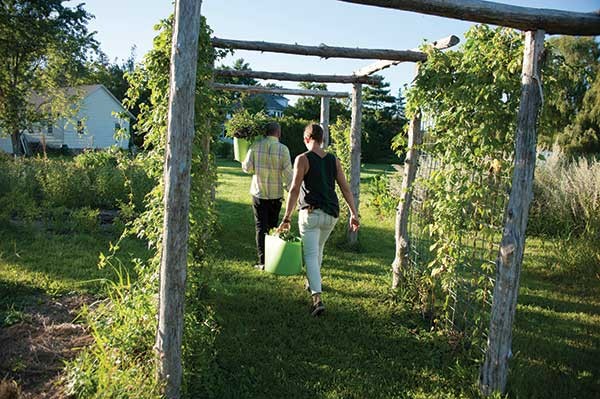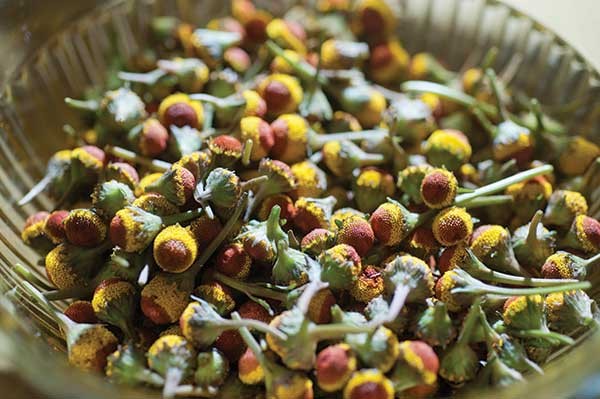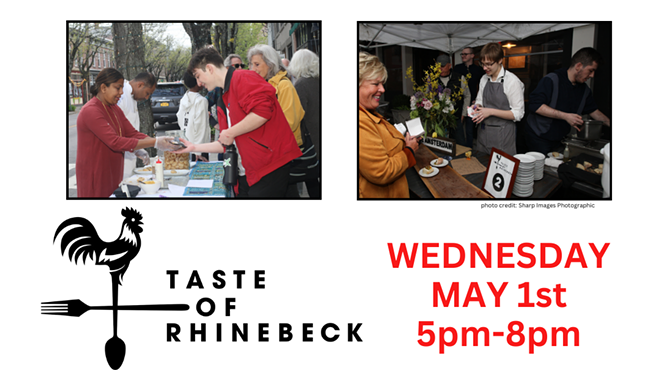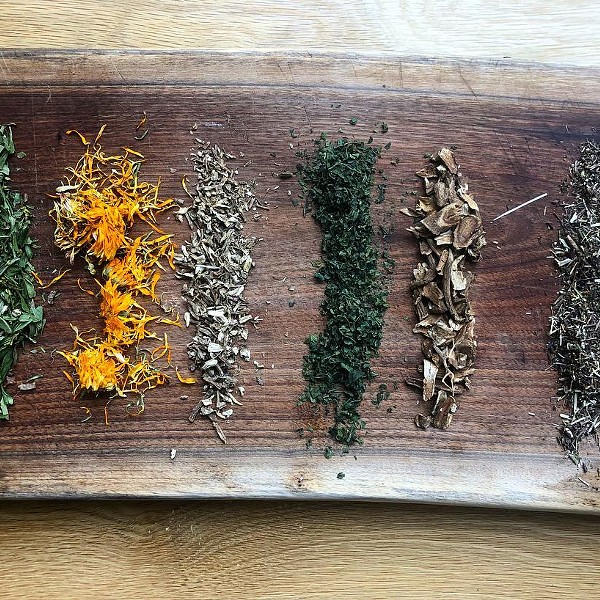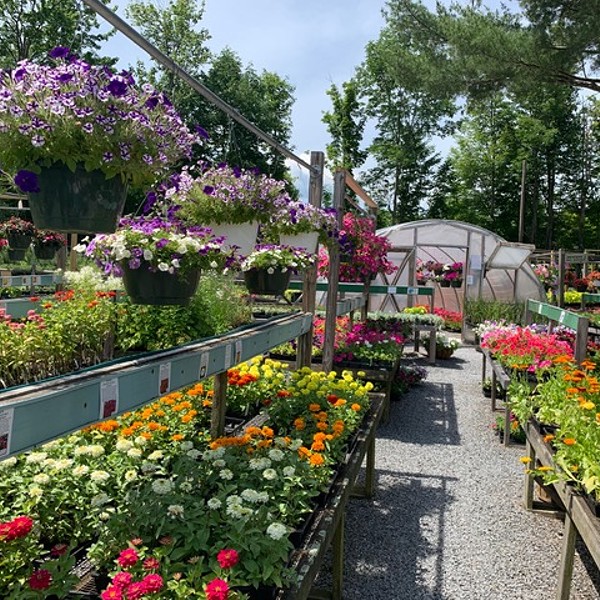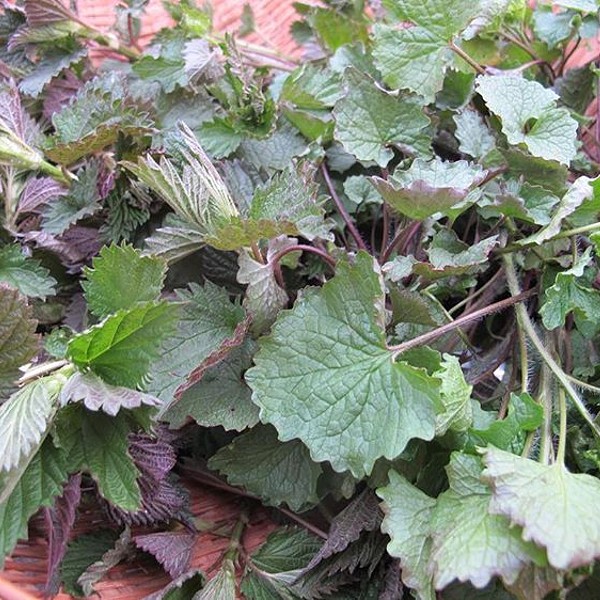That intentionality, the awareness and presence during harvest, cooking, and eating, is a big part of what the couple hopes to convey to their customers and students. "Fast food is always the same," Michael says. "But handmade food is unique, and beautiful. We use all our senses to experience it. Time slows down when you focus on an aesthetic experience—something happens that can be deeper, even healing." Their goal is to change herbs' status in our minds from something we add a pinch of to something we feature more prominently as an ingredient. While teas and tinctures allow for larger doses (it takes a fair amount of plant to make a dried teaspoonful, after all) eating fresh leaves does give your body everything they contain, not just the water (tea) or alcohol (tincture) soluble compounds.
Those eager to begin their education on the subject of healing plants should buy a copy of Foraging & Feasting: A Field Guide and Wild Food Cookbook (Botanical Arts, 2013) by renowned local expert Dina Falconi. The first half is a guide to common wild edibles, beautifully illustrated by Wendy Hollender, and the second part is a cookbook, full of recipes not just for the plants covered in the book but also master techniques for beans, grains, desserts, and more. You will recognize most of the plants' pictures from your yard; the book provides information and inspiration you can use right away to broaden and deepen your culinary rapport with the plant kingdom, increasing your health and pleasure simultaneously.
The Eudys own a popular gadget for making still water fizzy, and they use it regularly to make sodas flavored with their many tinctures, syrups, and decoctions. An iced glass of hyssop syrup and dill tincture stirred into carbonated water makes a sophisticated and satisfying summer beverage. They like to serve it before meals. "Hyssop opens up your bronchial tubes and esophagus, preparing your body to smell and taste and swallow the food," Michael explains. "Dill is a carminative; it helps digestion and reduces flatulence." Thus a simple drink readies one's body at both ends for a more enjoyable meal. They plan on creating a line of herb-infused Vitamin Water-type sodas and drinks as well, "They're a great way to get kids to take their herbs," says Dana, getting up to capture a wasp using a glass and a plate, releasing it out the side door facing the garden.
While some of their preparations are sweet, Michael speaks frequently about the importance of bitterness. "Bitter has been lost from the American diet. Bitterness stimulates the brain; it wakes up the gut." Apart from the medicinal benefits of many such compounds, they have underappreciated culinary value as well. Bitter is one of the five tastes, after all, so avoiding it reduces one's palate by 20 percent. All the members of the chicory family—dandelion, endive, radicchio, puntarelle, escarole, and more—make wonderful eating, both raw and cooked. Cooking, especially caramelization in a pan, can mitigate some of the bitterness, but a vivid pesto made from dandelions or pan di zucchero is the friendliest foil a fatty chop or a lentil salad ever met; the bitterness of the greens makes the sweetness of other foods pop.
Wild edibles, having evolved to survive on their own and free from humanity's domesticating interventions, contain more varied compounds and thus can often offer more potent medicinal properties. Some of the stronger, more unusual flavors—marigolds, for example—are best suited as garnishes; a few leaves or petals, elegantly topping a seared scallop, say, can make for fascinating bursts of flavor, revealing previously unknown facets of the food. The limitless possibilities for combining these intense aromas and tastes should inspire anyone to cook more and better. For dessert, chunks of peeled peaches sauced with heavy cream to which Michael adds a dash of lavender tincture illustrates the subtle magic their potions can work on a seemingly simple pairing; peaches and cream, pretty fine on their own, become perfumed by a gently insistent lavender note, floral and resinous, that lingers on the finish.
A recent trial run of their impending supper club featured no alcohol but included several similar herbal beverages throughout the meal. Senses undiminished by drink, Dana reports, their guests "were able to notice all the flavors and effects of the plants; they were really high by the end." To be clear, there were no controlled substances on the menu, but your correspondent can report that a heightened awareness does attend the conscious consumption of their products.







